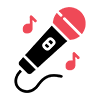Learning how to read guitar tabs is one of the most practical skills you can develop as a beginner guitarist. Many new players feel intimidated by sheet music, but guitar tabs offer an accessible alternative that lets you start playing songs immediately. Unlike traditional sheet music, guitar tabs visually represent where to place your fingers on the fretboard, making the connection between notation and physical playing intuitive and straightforward.
Guitar tabs, short for tablature, have democratized guitar learning. Before tabs became widespread, guitarists had to learn complex music theory or rely on hearing songs and figuring them out by ear. Today, you can find tabs for virtually any song online, and understanding how to read guitar tabs sheet music opens access to millions of songs at every skill level.
This step-by-step guide walks you through everything you need to know about reading guitar tabs, from understanding the basic layout to playing your first songs. Whether you’re interested in how to read electric guitar tabs, acoustic tabs, or any other style, these fundamental principles apply universally. For comprehensive guitar training and technique guidance, explore BMusician’s guitar foundations guide.
Why Learning Guitar Tabs Matters
Understanding how to read guitar tabs is fundamentally about accessibility and practical musicianship. Tabs connect written instruction directly to your instrument’s physical layout. When you see a number on a line, you immediately know which fret to press and which string to play. This directness eliminates the learning curve associated with reading traditional sheet music.
Guitar tabs also democratize song learning. Before being able to read tabs, you either needed a music teacher, sheet music literacy, or exceptional ear training skills. Tabs eliminate these barriers. A complete beginner can find a tab for their favorite song online and begin learning it within minutes. This immediate access to music you love sustains motivation and accelerates learning dramatically.
Learning how to read guitar tabs also builds finger familiarity with the fretboard. Each tab you work through reinforces where notes live on your instrument. Over time, this visual-to-physical connection becomes automatic, building the fretboard knowledge essential for advanced playing.
Understanding Guitar Tab Layout
Guitar tabs use six horizontal lines representing the six strings. The top line represents the highest string (high E), and the bottom line represents the lowest string (low E). Numbers placed on the lines indicate which fret to play—for example, a “3” on the second line means play the third fret on the B string. Horizontal placement shows playing order: read left to right, play numbers in sequence. If numbers stack vertically, play them simultaneously as a chord.
This fundamental layout mirrors your guitar’s physical design, making the connection intuitive and learnable.
Step-by-Step: Reading Basic Guitar Tabs
Step 1: Identify the Strings Each line represents a specific string. From top to bottom: E (high), B, G, D, A, E (low). Most tabs include letters showing this, but memorizing the sequence accelerates reading speed.
Step 2: Locate the Fret Numbers Numbers (0-24+) on lines indicate which fret to play. Zero means play the open string. Three means press the third fret. Numbers indicate single notes played one at a time.
Step 3: Follow the Horizontal Sequence Read left to right. Play the first note, then the next, then the next. Vertical stacking means play simultaneously as a chord.
Step 4: Recognize Timing Through Spacing Tab spacing indicates relative timing. Close numbers are played quickly. Larger gaps indicate longer pauses. This gives visual pacing sense without exact sheet music timing.
Step 5: Identify Special Symbols Beyond basic numbers, tabs use technique symbols. A slash “/” indicates a slide. A “b” indicates a bend. A “h” indicates a hammer-on. Learning these symbols expands tab reading capability significantly.
Common Guitar Tab Symbols Explained
Standard Notation:
- Numbers (0-24+): Fret positions to play
- Horizontal lines: The six guitar strings
- (/): Slide—play the first note, then slide your finger without releasing
- (h): Hammer-on—press a fret, then hammer another fret without re-plucking
- (p): Pull-off—press a fret, play it, then pull your finger away to sound a lower fret
- (b): Bend—press a fret and bend the string upward to raise pitch
- ~: Vibrato—quickly bend the string back and forth
- |—–|: Measure separators
- Notes stacked vertically: Play simultaneously as a chord
Don’t master all symbols immediately. Start with basic numbers and single notes, then gradually incorporate techniques as you encounter them.
How to Read Guitar Tabs Sheet Music
Guitar tabs are often presented alongside sheet music. When combined, tabs sit below standard notation, giving you multiple interpretation methods: sheet music shows exact pitch and rhythm, while tabs show fretboard location. This combination helps develop both tab and notation literacy.
Many online resources provide tabs separately from sheet music, but learning to read both strengthens overall musicianship. Some guitarists eventually read primarily sheet music, others prefer tabs exclusively. Having both skills provides maximum flexibility.
Practical Learning Strategy
Start with simple songs: Choose beginner-marked songs you love. Knowing how the song should sound helps your brain interpret tabs correctly. “Wonderwall,” “Smoke on the Water,” or “Sunshine of Your Love” help connect tab symbols to actual music.
Use online tab resources: Ultimate Guitar, Chordify, and Songsterr provide searchable tab databases. Start with beginner-rated tabs. Check multiple versions of the same song—different transcriptions vary in clarity.
Learn how to read electric guitar tabs: Electric and acoustic tabs use identical notation. Electric tabs more frequently include technique symbols. Practicing electric tabs builds familiarity with advanced techniques.
Practice consistently: Fifteen to twenty minutes daily produces better results than sporadic longer sessions. Consistency builds automatic symbol and fret position recognition.
Combine tabs with ear training: As you play tabs, listen carefully to actual sounds. This audio-visual connection strengthens learning and develops your ear simultaneously.
Progress gradually: Start with single-note melodies before moving to chords and complex techniques. Build confidence through early success.
Moving Beyond Basic Tab Reading
Once comfortable reading basic tabs, your skills naturally expand. Learning how to read electric guitar tabs with advanced techniques like pinch harmonics or tapping opens access to more complex music. Pattern recognition helps you eventually predict what comes next, chords have consistent shapes, melodies follow scales.
Many guitarists eventually combine tab reading with ear training. Understanding tabs gives you a foundation making ear training easier. You know what notes to listen for and where they live on your instrument.
Conclusion
Learning how to read guitar tabs is your gateway to playing thousands of songs as a beginner. Tabs transform sheet notation into fretboard positions, eliminating barriers between written music and actual playing. Start with simple single-note melodies in familiar songs. Gradually incorporate chord reading and technique symbols. Practice consistently, use quality online resources, and combine tabs with ear training. Every guitarist mastered tab reading as a foundational skill. Explore BMusician’s guitar training to accelerate your learning alongside structured instruction. Your musical journey begins with tabs start reading now.
Frequently Asked Questions
Q: What’s the difference between guitar tabs and sheet music?
A: Sheet music shows pitch height and exact timing through staff notation, while guitar tabs show exact fretboard positions using numbers on six lines representing strings. Tabs are more beginner-friendly because they directly show where to place your fingers. Sheet music requires understanding music theory and rhythm notation. Many resources provide both simultaneously.
Q: Do I need to learn sheet music if I can read tabs?
A: Not necessarily to play guitar. Many accomplished guitarists play primarily through tabs and ear. However, learning basic sheet music expands your musical understanding and enables reading arrangements that might not have tabs. Combining both skills provides maximum flexibility and musicianship.
Q: How long does it take to learn how to read guitar tabs?
A: Basic tab reading takes just a few hours to understand fundamentally. With a few days of practice, most beginners read simple single-note tabs comfortably. Full proficiency with complex techniques and chord reading develops over weeks and months. Consistent daily practice accelerates learning significantly.
Q: Where can I find reliable guitar tabs online?
A: Ultimate Guitar, Chordify, and Songsterr are the most popular tab resources, offering searchable databases with ratings. Ultimate Guitar’s community voting system helps identify accurate tabs. Always cross-reference multiple versions if a tab seems unclear. Many tabs have comments pointing out corrections or accuracy issues.
Q: Can I use tabs to learn how to read electric guitar tabs differently than acoustic?
A: Electric and acoustic tabs use identical notation systems. The difference lies in the technique symbols more commonly used in electric guitar tabs; bends, vibrato, and slides are more frequent in electric music. The fundamental reading skill is identical. Learning electric tabs builds familiarity with advanced techniques that transfer across all guitar styles.










